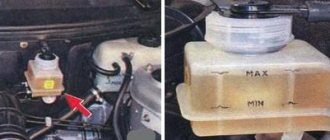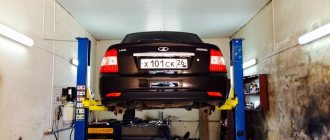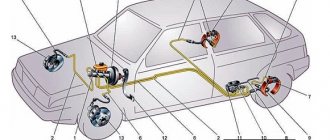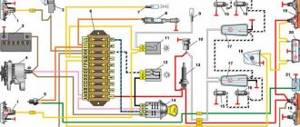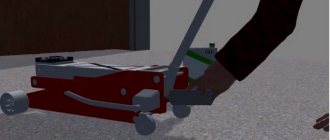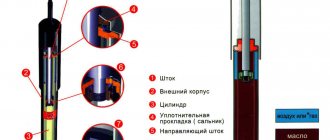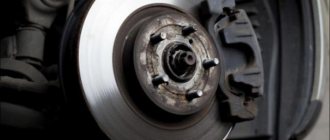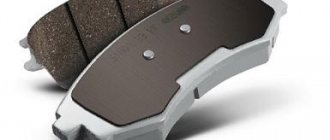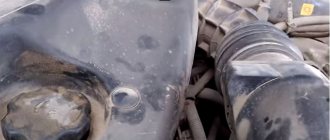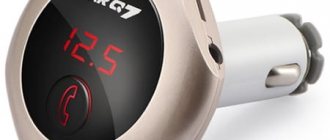Perhaps the most important component in any car is the brake system. It is this that allows you to slow down the car in time, ensuring traffic safety. Today, most passenger cars use a hydraulic braking system. And the cars of the Samara-2 family are no exception. Car owners should know under what circumstances they should bleed the brakes of a VAZ-2115 and how to do it correctly. All this will be discussed further in our article.
Signs to watch out for
In what cases should this operation be performed? The main reason that leads to pumping is air accumulated in the system. It can get inside for various reasons. As a rule, this is a malfunction of the brake cylinders or leaking hoses. Very rarely, air gets in due to a weak connection of the fittings, but this possibility should not be ruled out.
How to determine that air has formed in the system? The driver will notice changes in the behavior of the car. So, when you press the pedal, the car will not reduce speed as effectively. And the pedal itself will be more sluggish and have an increased stroke. The situation is critical when it completely falls into the floor, and the car barely slows down. In this case, it is urgent to bleed the front and rear brakes of the VAZ-2115.
This operation is also required when replacing brake fluid. If it has not been updated for more than three years or has become black, it definitely needs to be replaced. In addition, some fluids are changed when buying a car on the secondary market, when there is no confidence in the reliability of the system. Bleeding may also be required when doing any work on the brake system. This may include replacing the reservoir, working or master cylinder, hoses and other elements. It is not pumped only when replacing the pads, since the working cylinders are only recessed here (both in the case of front disc mechanisms and rear drum mechanisms).
Bleeding brakes on a VAZ 2110
The brake system is a very important component of any car, regardless of its brand and other characteristics. Malfunctions of the brake system are one of the common troubles that arise every now and then during the operation of a car. However, in most cases they can be avoided if preventive measures are taken in time.
Why do you need to bleed the brakes?
Thus, one of the most common measures to prevent and ensure the stability of the brake system is bleeding the brakes. The essence of this event is to remove “excess” air and foreign liquids from the system. There may be several prerequisites for the appearance of “foreign” substances in the brake system:
- spare parts were replaced in the unit,
- violation of the integrity of the hoses,
- use of low-quality brake fluid, etc.
In addition, it should be understood that brake fluid has the property of being hygroscopic, that is, it has the ability to accumulate water. For this reason, sooner or later the liquid must be drained and the system, accordingly, must be pumped. Replacing brake discs with your own hands, by the way, also entails the need for bleeding, just like any other intervention in the brake system.
Required tools and materials
To get to the fittings in the absence of an inspection hole, we need to unscrew the wheels. Therefore, you need a jack, stops and a wheel wrench. If there is a hole or overpass, the wheels do not need to be unscrewed. You will also need new brake fluid. On vehicles of the Samara-2 family, RosDot of the fourth class is used. In addition, we need a plastic bottle and a hose that will be put on the fitting (so that the liquid does not splash in different directions, but goes out into a certain container). To unscrew the fitting, you need a regular 8mm wrench.
Preparing for surgery
So, put the car in a pit or on a flat surface, then open the hood and remove the connector for the brake fluid level sensor. Then unscrew the cap and add liquid to the maximum level. After this, screw on the lid.
Please note: if you use a lift during the work, when bleeding the rear brakes you need to place the slot in the brake force regulator (also called the “sorcerer”). To do this, you can use a screwdriver by placing it between the rod and the bracket.
When bleeding the front brakes, this slot must be removed.
How to bleed the brakes on a VAZ-2115? During the work we will need one assistant. He will press the brake pedal on command.
Pumping - important nuances
In a situation where repair work was carried out on only one cylinder, then bleeding is done only on it - there is no need to touch the other wheels.
If your 2115 has ABS, there are a few things to keep in mind. Before bleeding, you should turn on the ignition, and only after that press the brake pedal at least 4 times. Then fill the tank with TJ to the maximum and then proceed as described above.
When work is done on the rear wheels, the ignition is not turned off. This allows you to use the ABS system pump - it will create the necessary pressure.
Bleeding the brake system is necessary to remove air from it, which can enter the system during repairs, replacement of brake fluid, depressurization of the system when pipes and hoses are damaged, or when the level of brake fluid in the brake master cylinder reservoir drops. A sign of the presence of air in the brake system is increased travel and “softness” of the brake pedal.
The order of bleeding the brake mechanisms: – rear right; – front left; – rear left; - front right.
1. Check the level and, if necessary, add brake fluid to the reservoir to the “MAX” mark.
2. If the rear wheels are suspended, first unlock the rear brake pressure regulator by inserting a screwdriver between the plate and the piston. Don't forget to remove it after finishing work.
3. Clean the air release valve on the brake mechanism from dirt and dust.
4. Remove the protective cap from the air release valve. Place the rubber hose over the valve head and immerse the end of the hose in a clean, clear container partially filled with brake fluid (the end of the hose should be submerged in the fluid).
5. An assistant should sharply press the brake pedal four to five times (with an interval of 1–2 s between presses). After the last swing you need to keep the pedal pressed.
6. Unscrew the air release valve 1/2 to 3/4 turn. Air bubbles will be visible in the liquid flowing from the hose. When the fluid stops flowing from the hose, close the air release valve completely, after which the assistant should release the brake pedal.
7. Repeat steps 5 and 6 until there are no bubbles in the flowing liquid. Monitor the brake fluid level in the reservoir and, if necessary, add fluid, ensuring that the level does not drop below the “MIN” mark.
8. Remove the hose, wipe the air release valve fitting dry and put the protective cap on it.
9. Bleed the brakes of the remaining wheels, if necessary.
Perhaps the most important component in any car is the brake system. It is this that allows you to slow down the car in time, ensuring traffic safety. Today, most passenger cars use a hydraulic braking system. And the cars of the Samara-2 family are no exception. Car owners should know under what circumstances they should bleed the brakes of a VAZ-2115 and how to do it correctly. All this will be discussed further in our article.
Let's get started
Let's look at how to bleed the brakes on a VAZ-2115 with your own hands. So, first we need to find the fitting on the back of the rear wheel drum.
It will be closed with a protective cap. We need to remove the last one. Next, put a hose on the fitting and direct it into a plastic bottle. After this, we need the help of a second person who, on command, will press the brake pedal several times. This must be done about four to five times at intervals of one to two seconds in order to create pressure in the system. When pressed for the last time, the pedal is held to the floor. At this moment we carefully unscrew the fitting. It is important to unscrew it smoothly, since at first the liquid will flow under very high pressure. As the fluid comes out, the assistant will feel the pedal sink to the floor.
We need to monitor the amount of air in the liquid. If it had a lot of bubbles, the procedure must be repeated again. Before applying pressure with the pedal, the fitting must be tightened. Then everything follows the established pattern. An assistant holds the pedal, and we unscrew the fitting and look at the condition of the fluid. If it comes out quietly and does not “spit,” it means there is no longer any air in the circuit. At this point you can tighten the fitting and put a protective cap on it.
How to bleed the brakes on a VAZ-2115 further? After this, they move on to the next, now the front wheel.
But before bleeding the brakes on the VAZ-2115, you need to add fluid, since some of it was poured through the fitting. The pumping scheme is the same. First, unscrew the fitting, put on the hose, create pressure and unscrew the mechanism. And so on until normal fluid comes out.
How to bleed the brakes on a VAZ 2114 video instruction
Most often, it is necessary to bleed the brakes in different cars, including the VAZ-2114, after the brake fluid has been replaced. Air can also get into the brake system when replacing any unit. If there is air, the system is unable to function normally. A sign of the presence of air in the system is the “pushing” of the pedal when you press it. Moreover, if you press the pedal several times in a row, it returns to its normal position. If you are faced with such a situation, you should find out how to properly bleed the brakes on a VAZ-2114. By following certain rules, you will be able to complete this procedure quickly and without any problems.
Preparatory stage
If you decide to bleed the brakes yourself, it is important to know that when bleeding you must use the same brake fluid as the one in the system.
No other liquid can be used. You must first check the tightness of the system. To level up you need one more person. You will also need a hose of a suitable diameter for the bleeder fitting, a glass or plastic container (transparent), a wrench and a rag for cleaning the caps.
It is very important to know in what order to remove air from the brake system. This procedure must be carried out diagonally, alternating the rear and front brakes:
- rear right;
- front left;
- rear left;
- front right.
Sequencing
First you need to open the hood of the car and open the cap of the brake fluid reservoir. Make sure it is filled to the maximum. If not, add to about. After this, follow the steps in the following sequence:
- On the rear right wheel, find the cap that covers the fitting. Remove the cap and clean it of dirt.
- Fill a clear glass or plastic container with brake fluid.
- Place one end of the hose onto the fitting and place the other end into a glass or transparent plastic bottle. The hose must be lowered into the liquid.
- Ask your partner to sit behind the wheel and gently press the brake pedal 7 times with breaks of 2 seconds. After this, he must press the pedal again and leave it in this position (pressed all the way).
- While an assistant holds the pedal, use a wrench to unscrew the fitting 2-3 turns.
After all these steps, you will see that brake fluid will flow into a transparent container through the hose. Watch how it drains.
There will be visible air bubbles in it that need to be removed. Drain the liquid until the bubbles disappear. Then screw the fitting back on. Only after this can your assistant release the pedal. When the liquid flows into the container, monitor its level in the tank. If necessary, add brake fluid. If during pumping it completely leaks out, you will have to start the whole procedure from the beginning.

